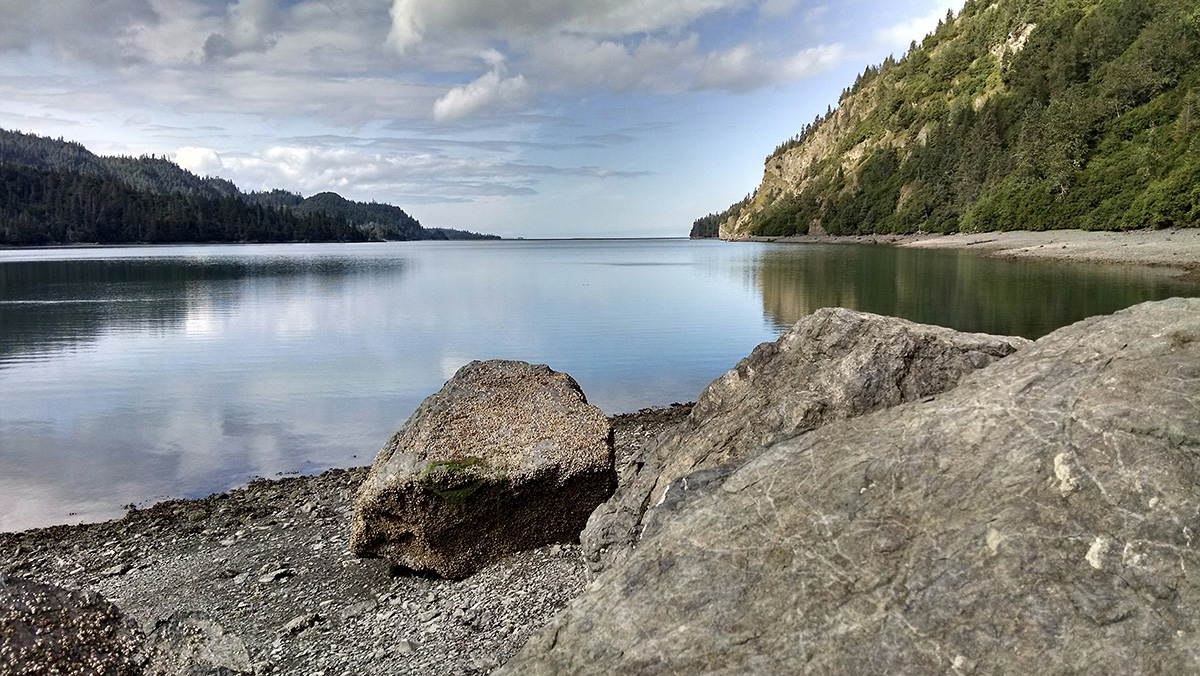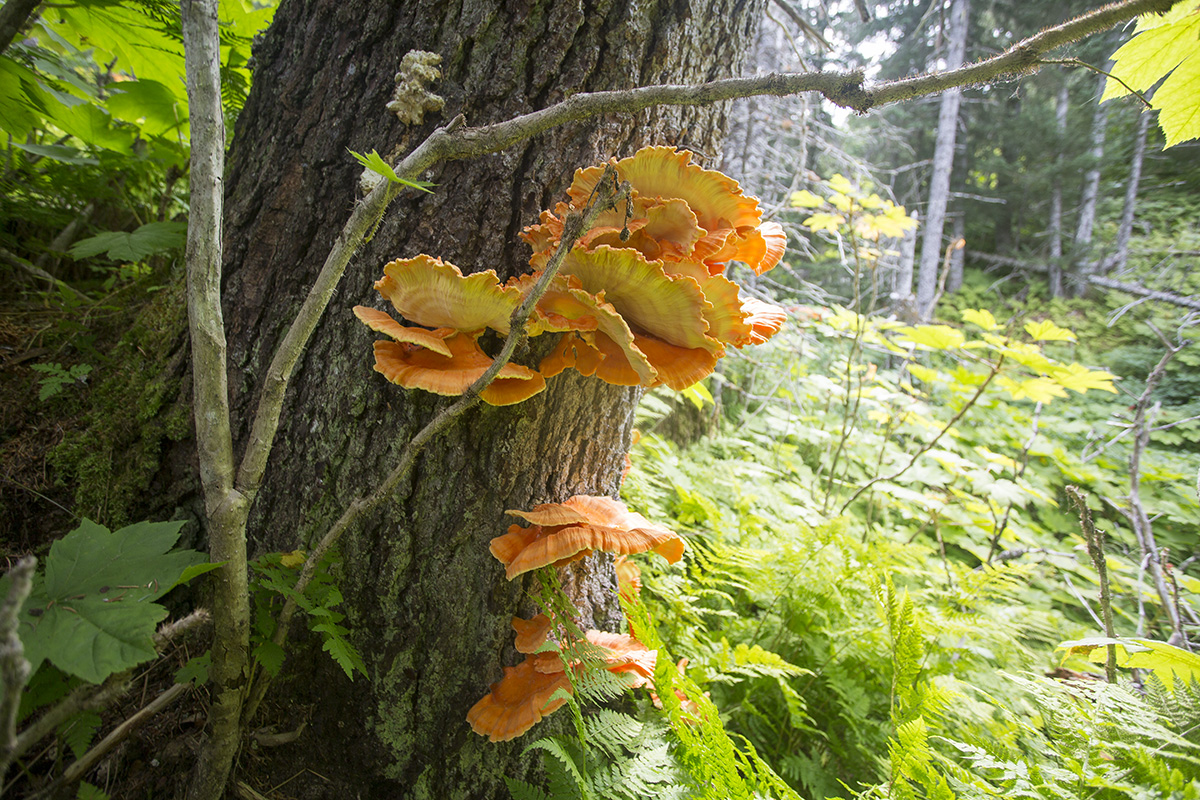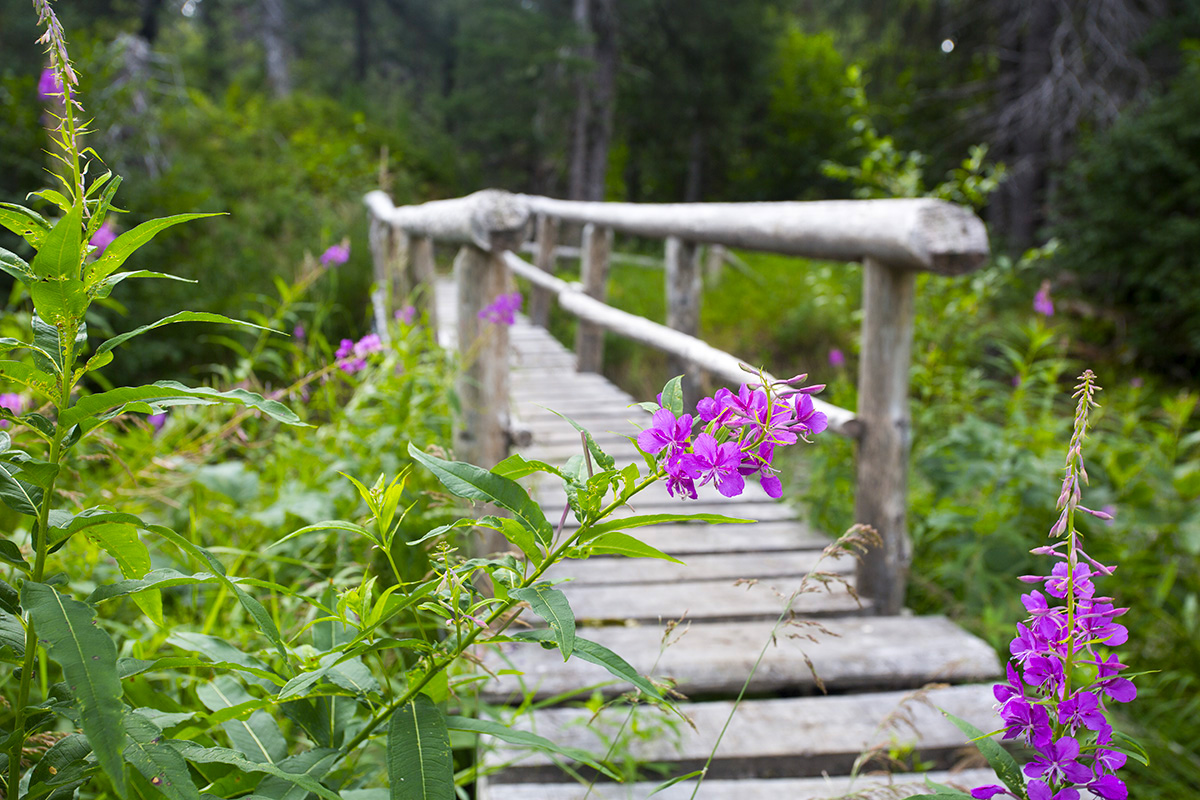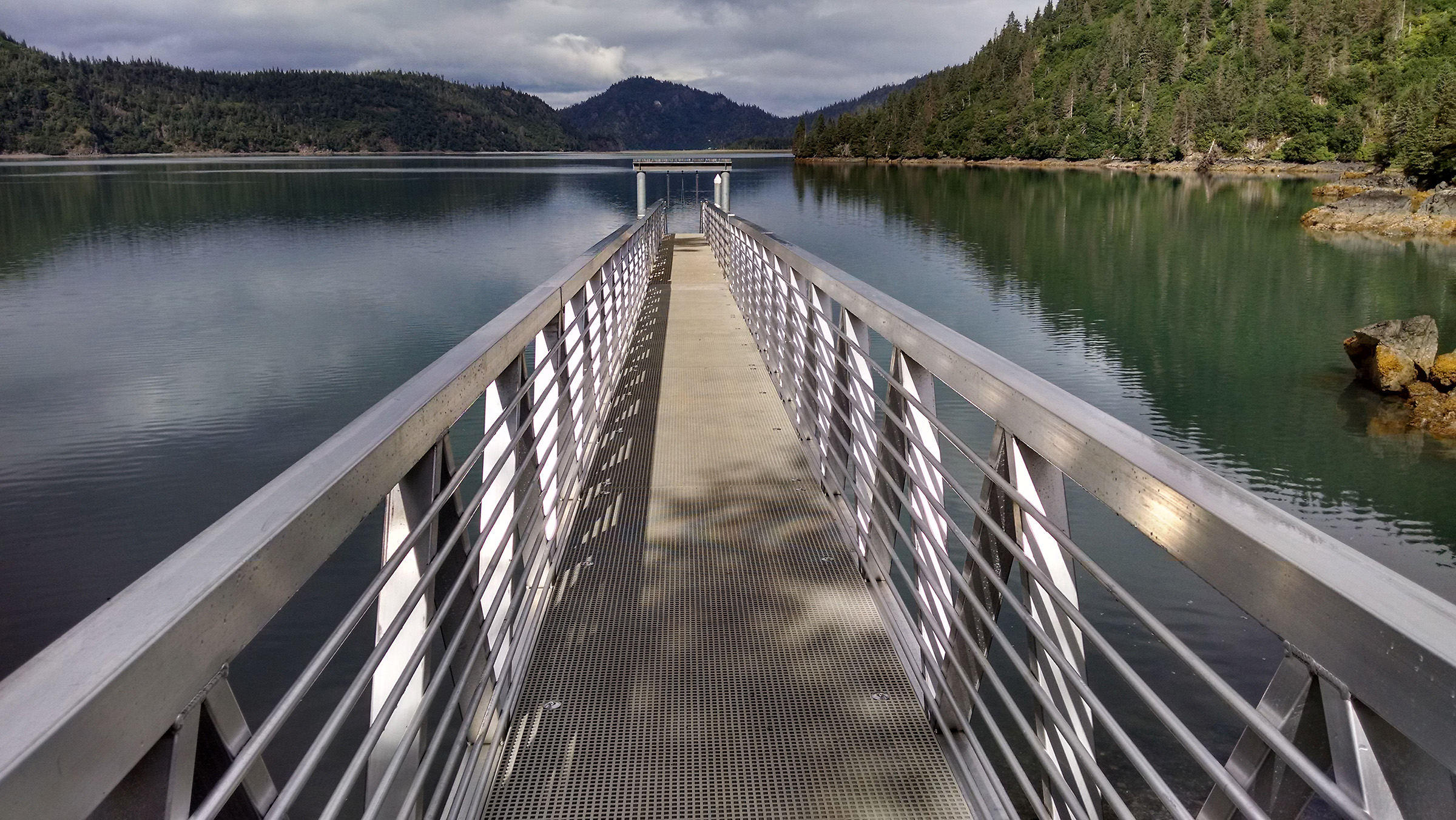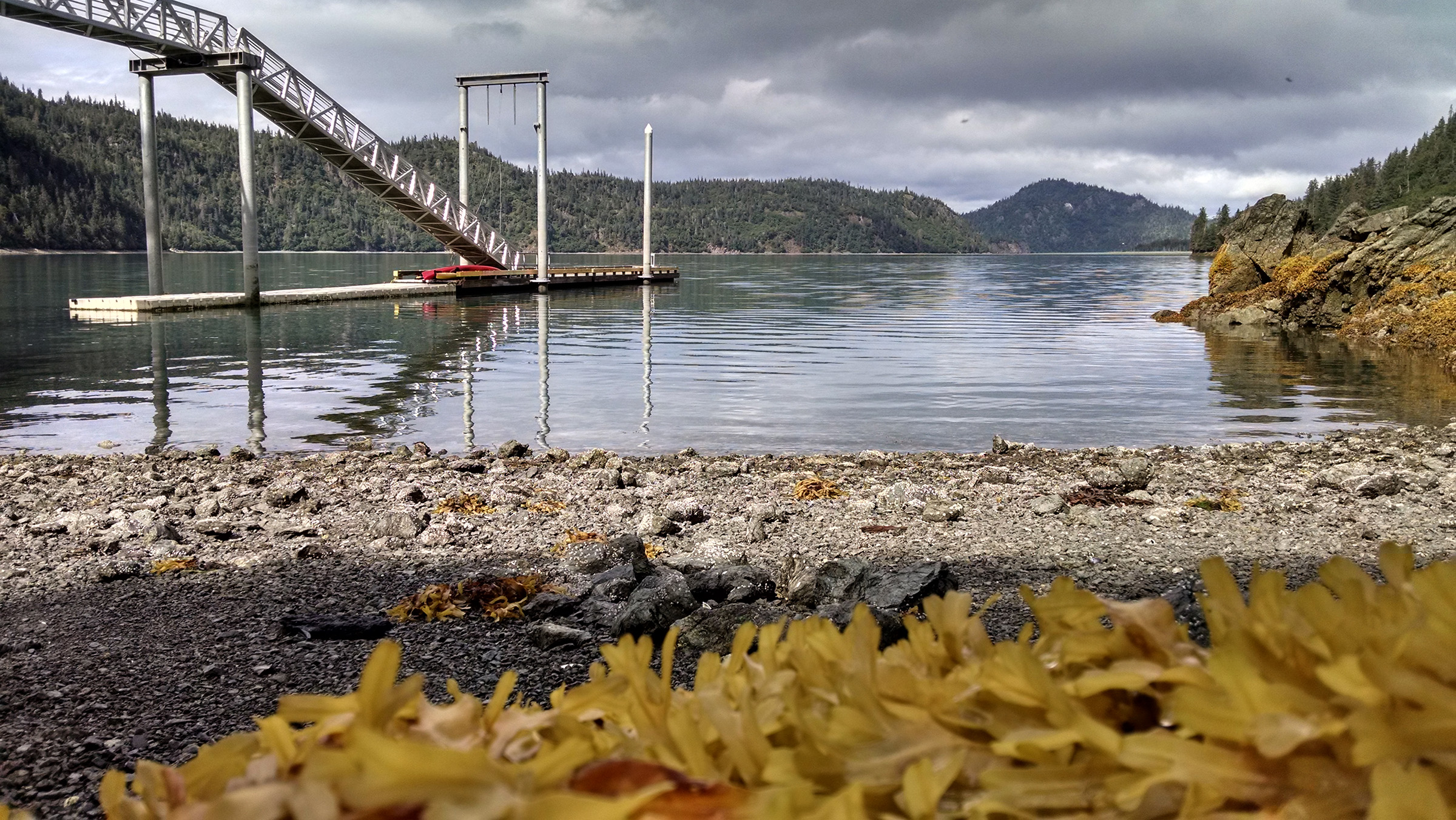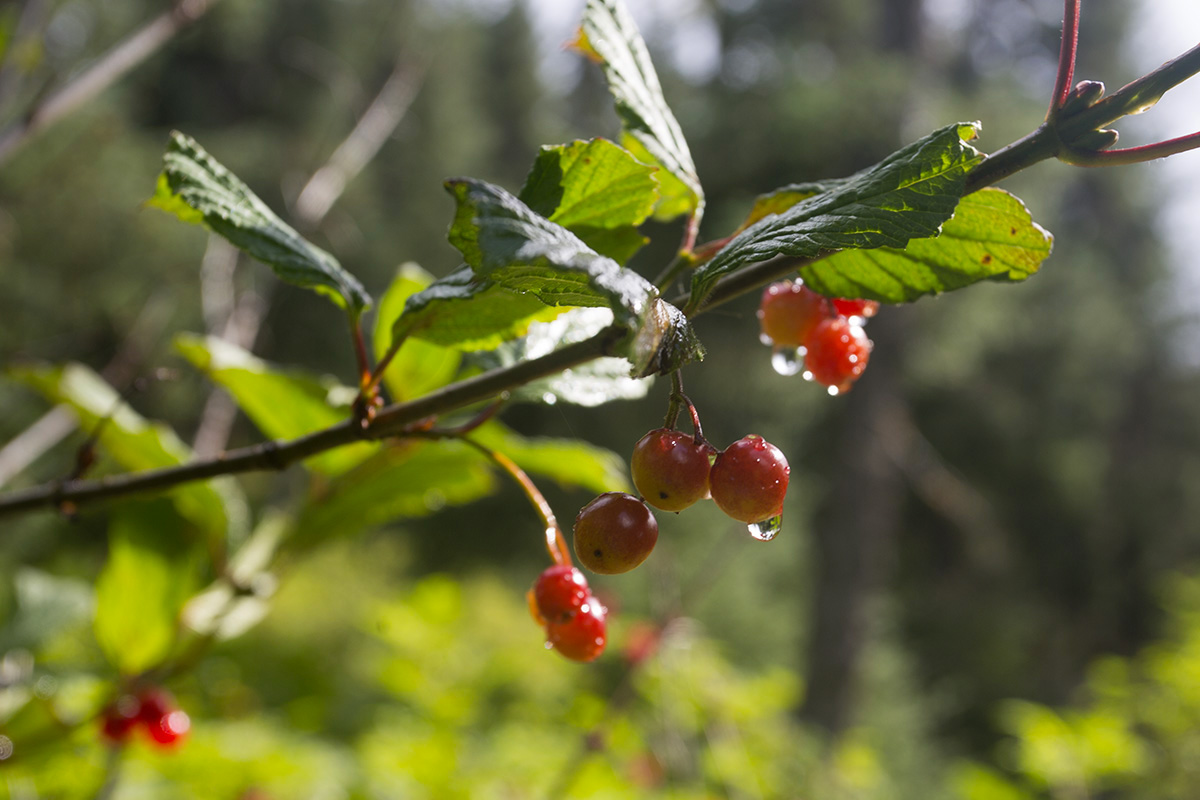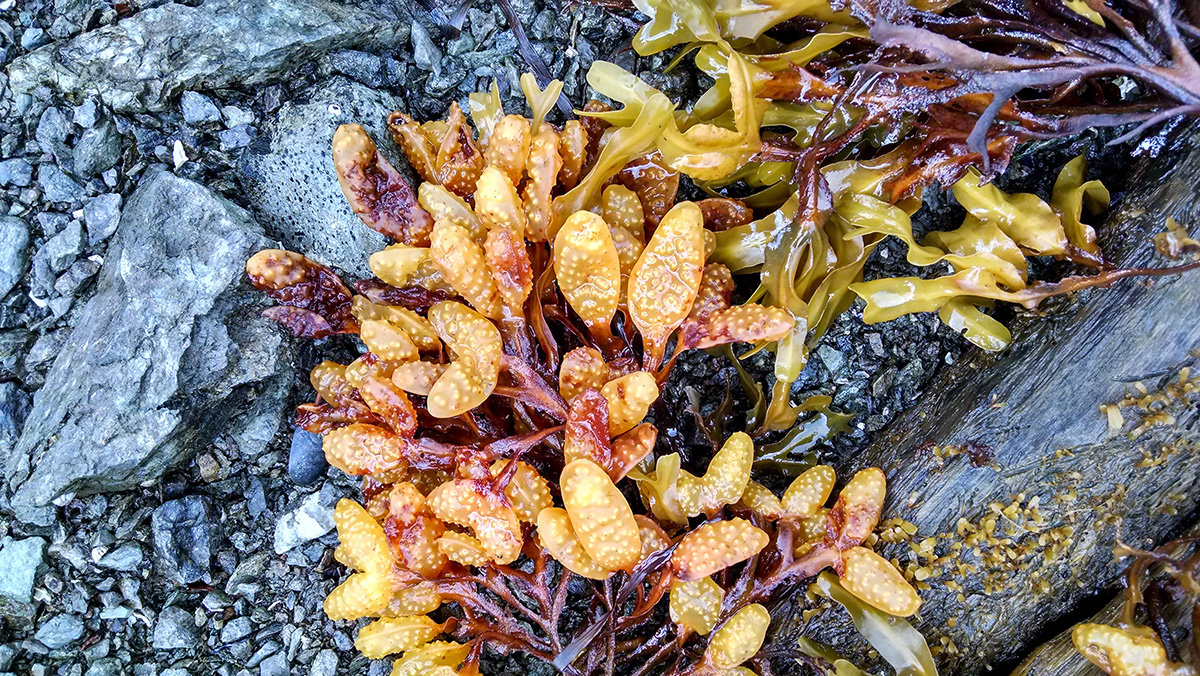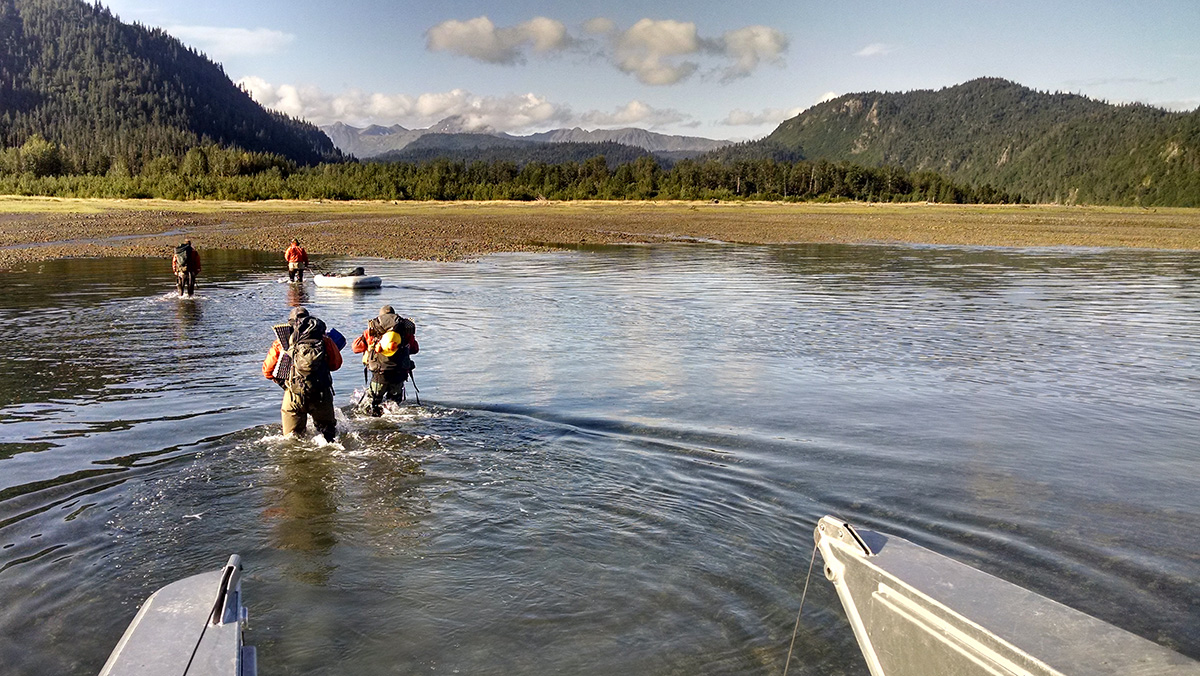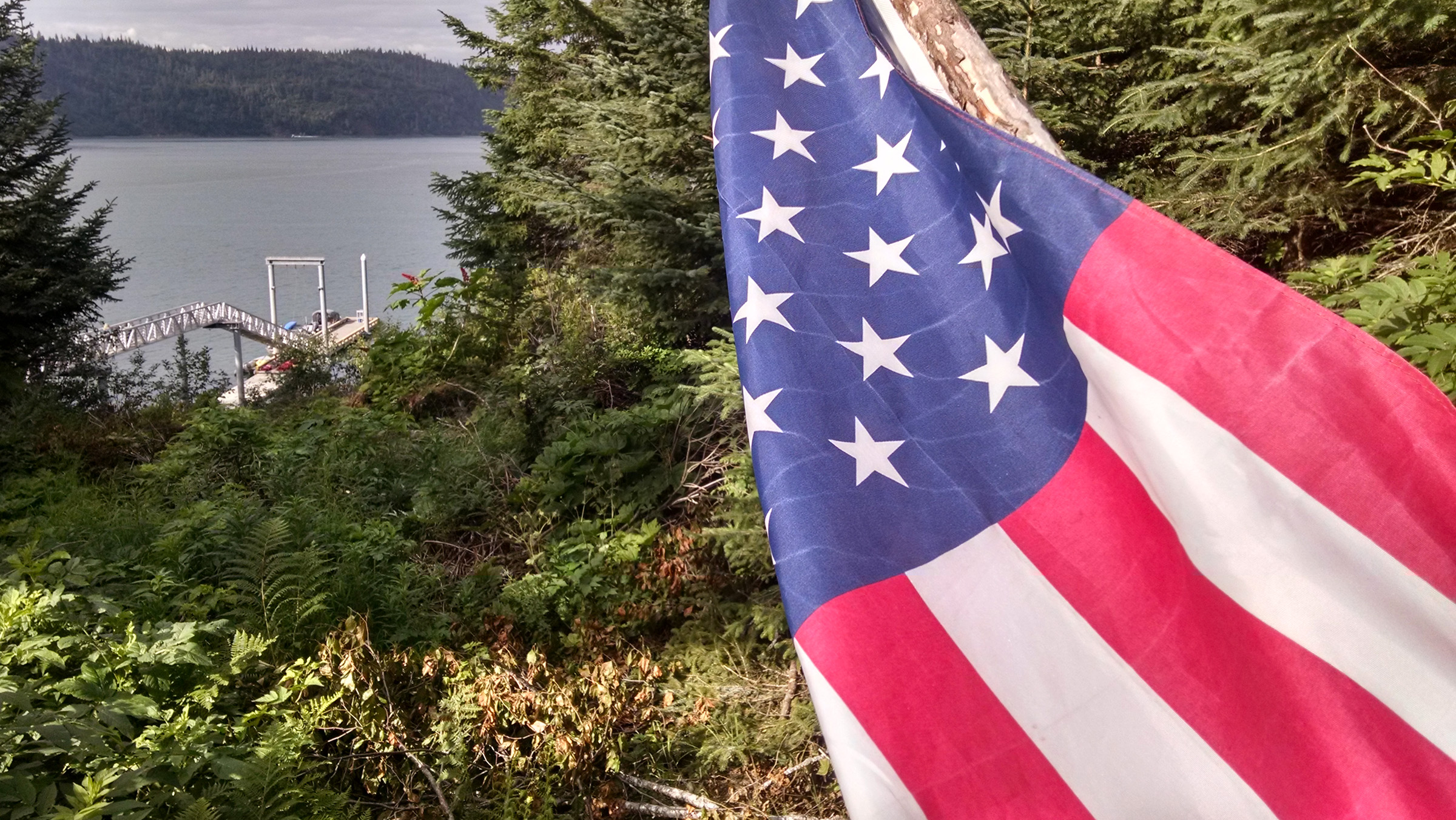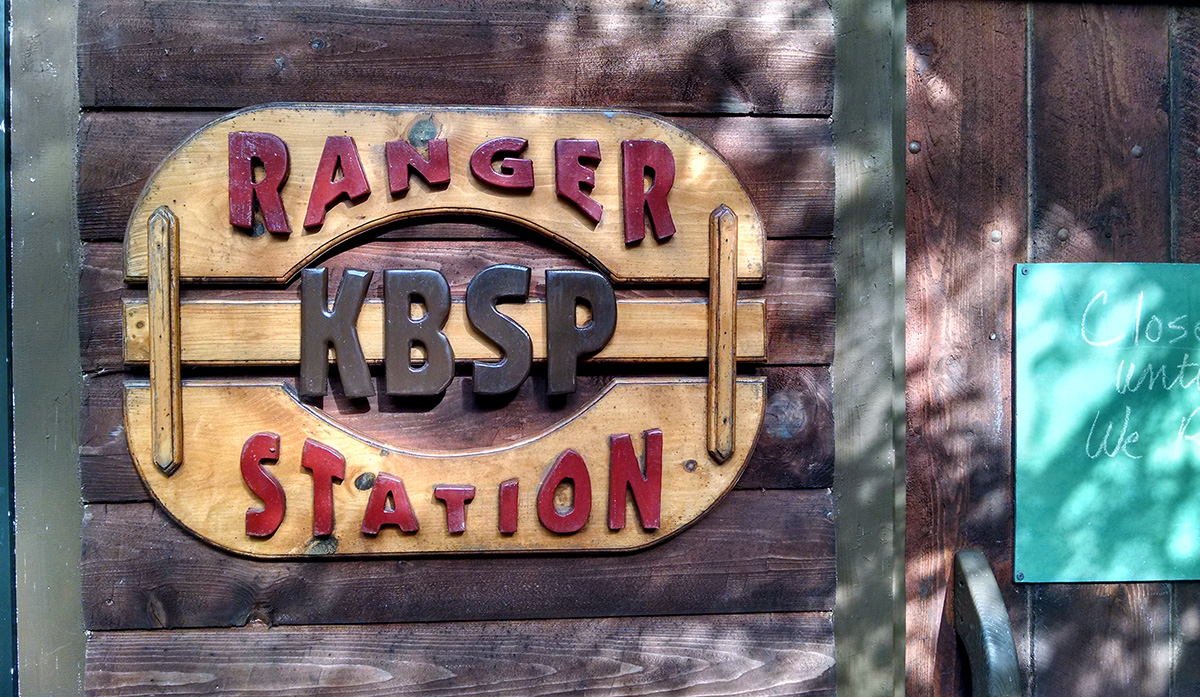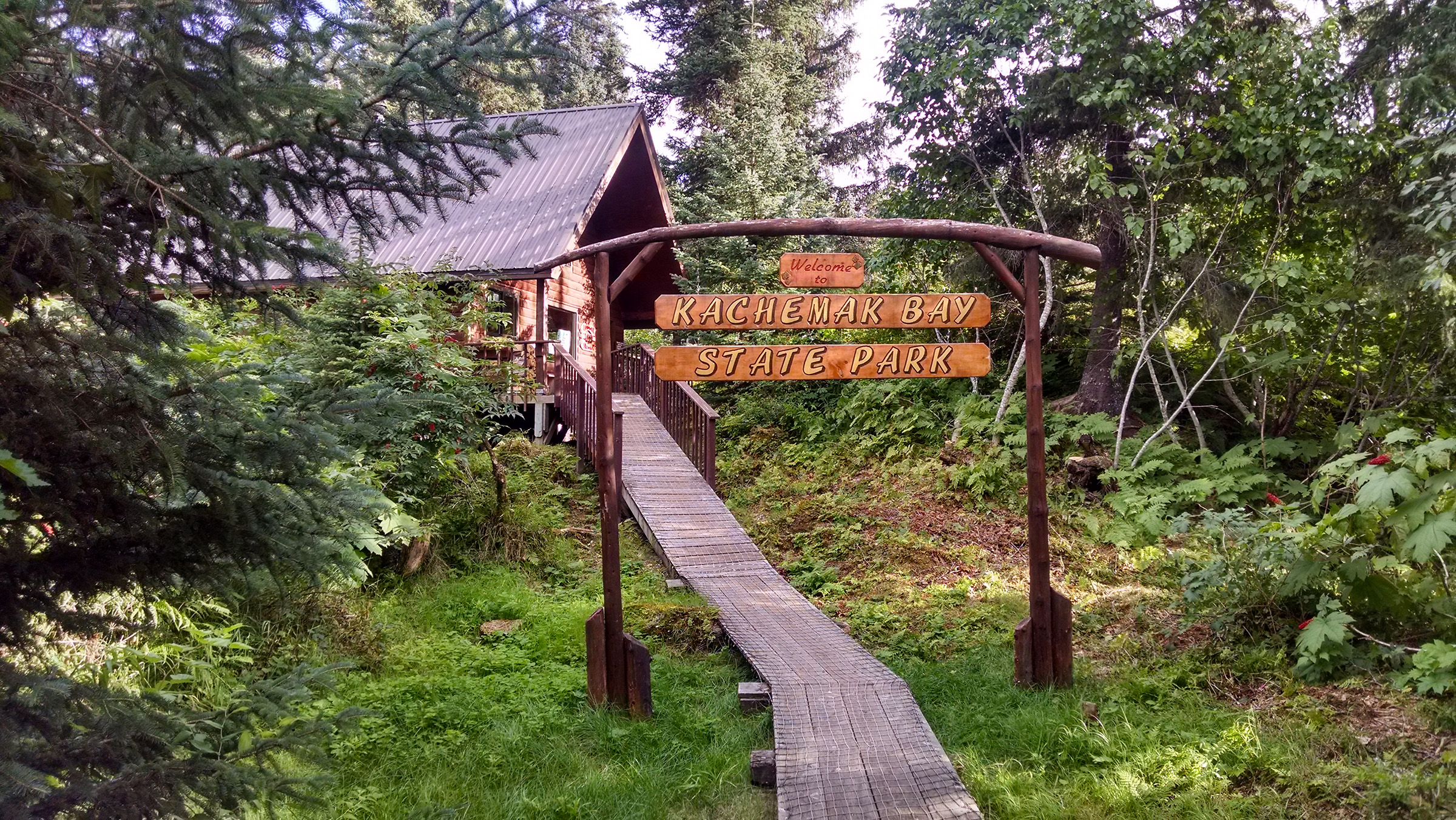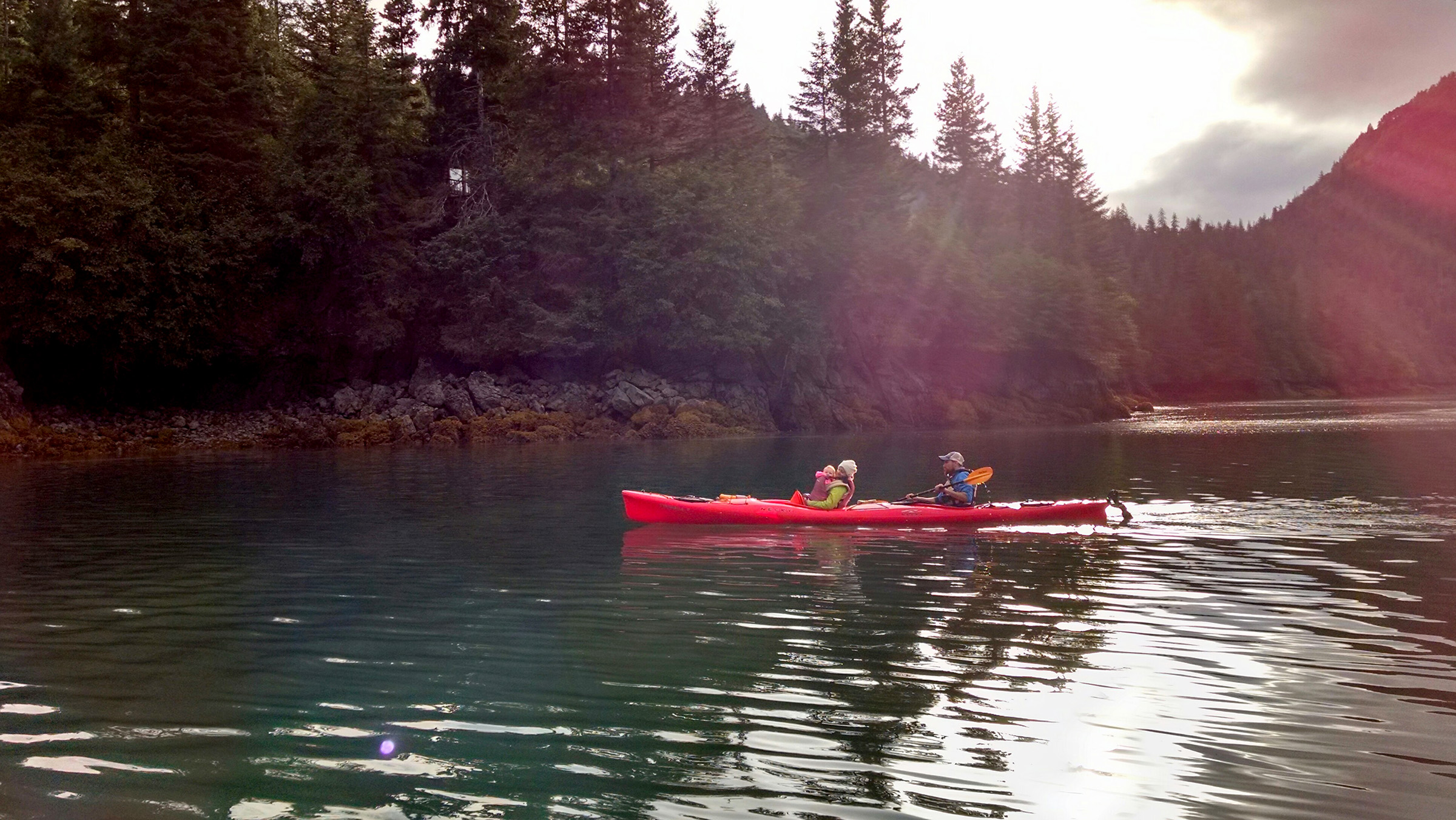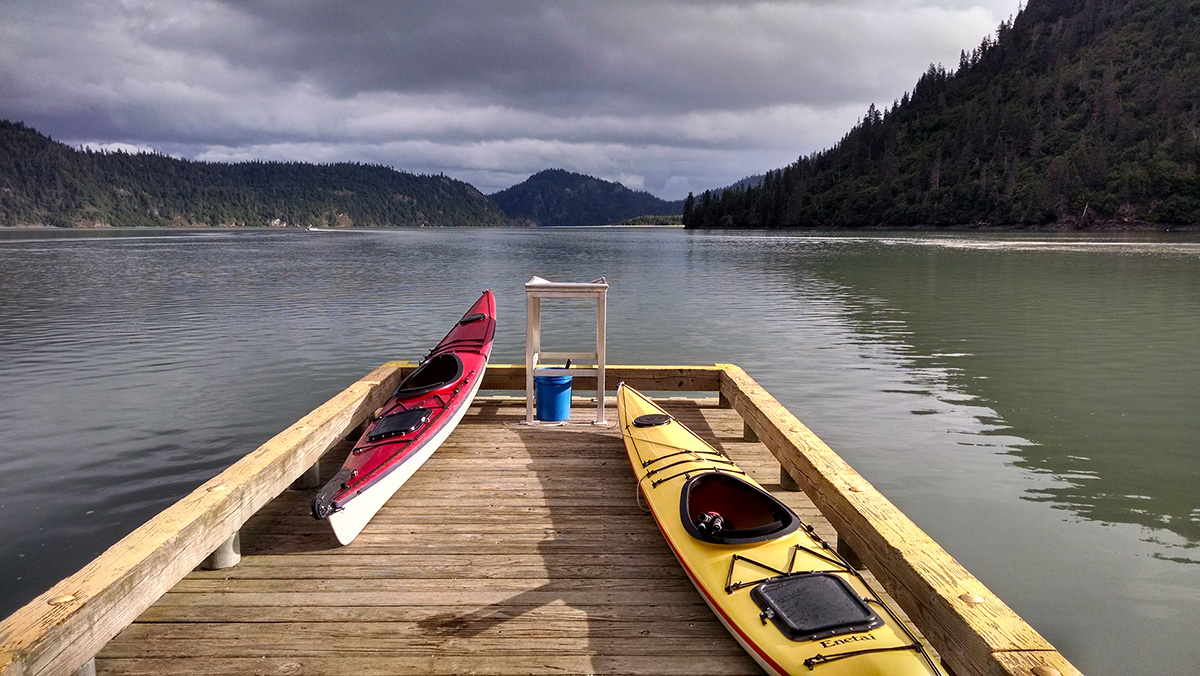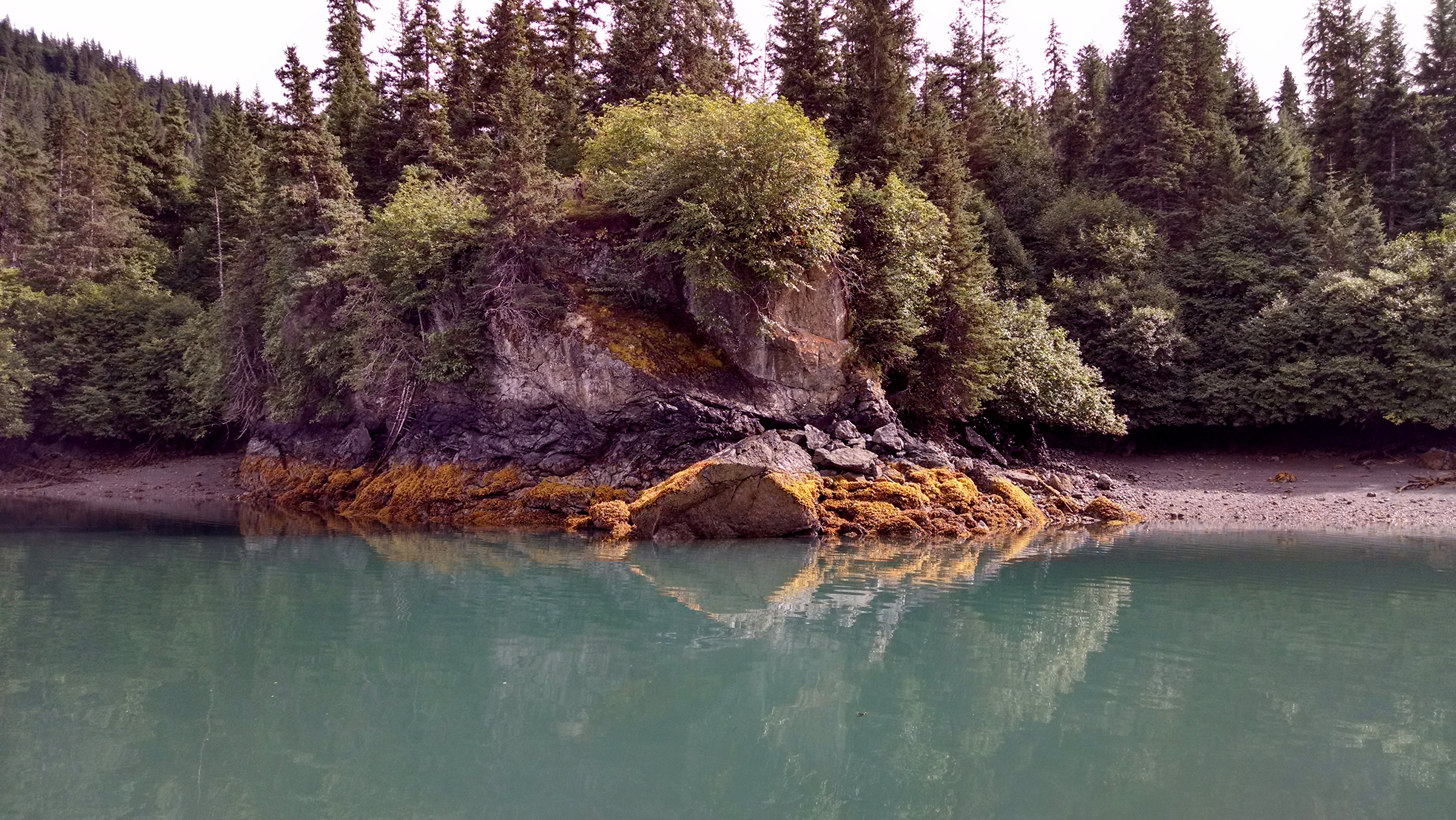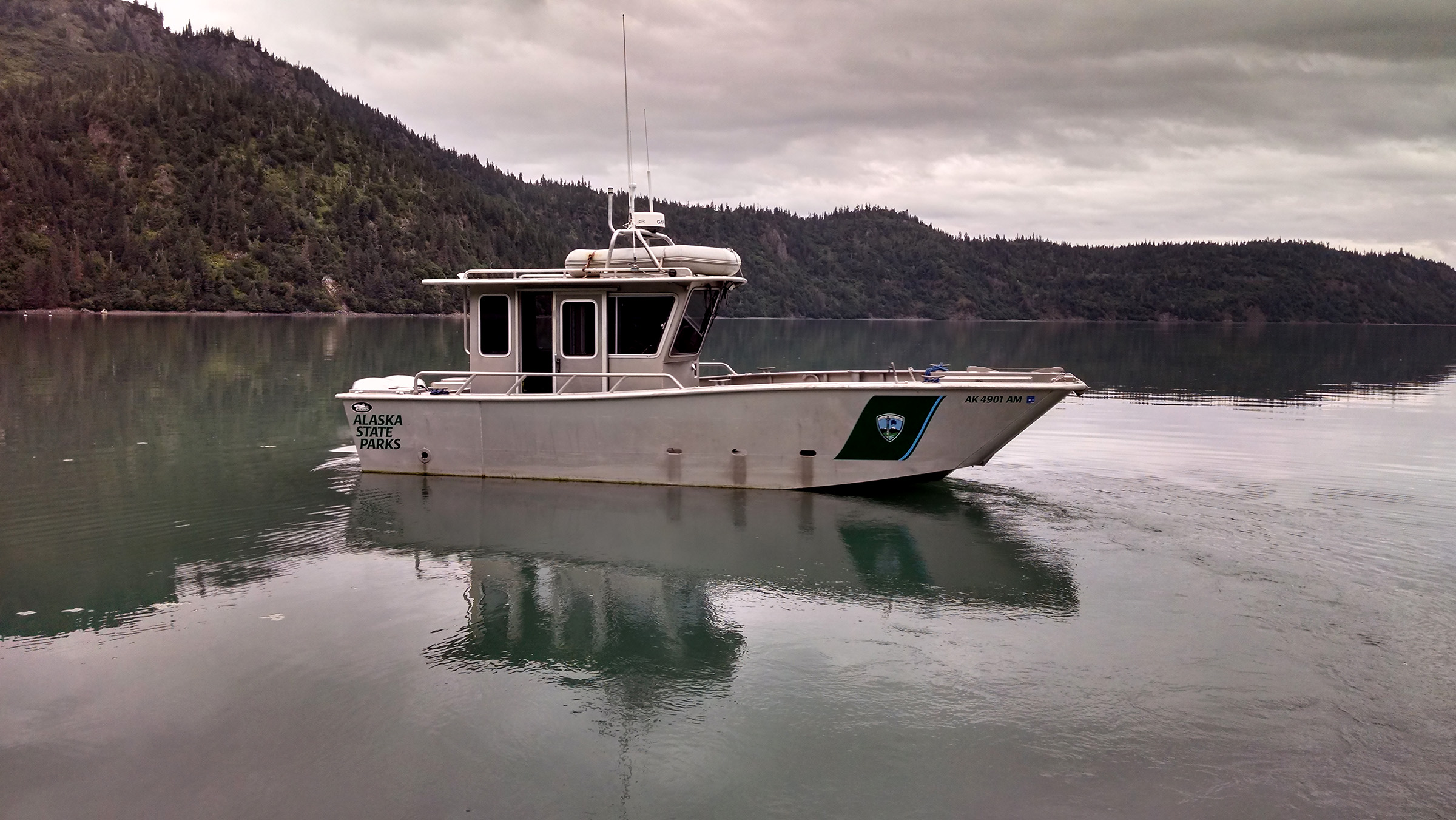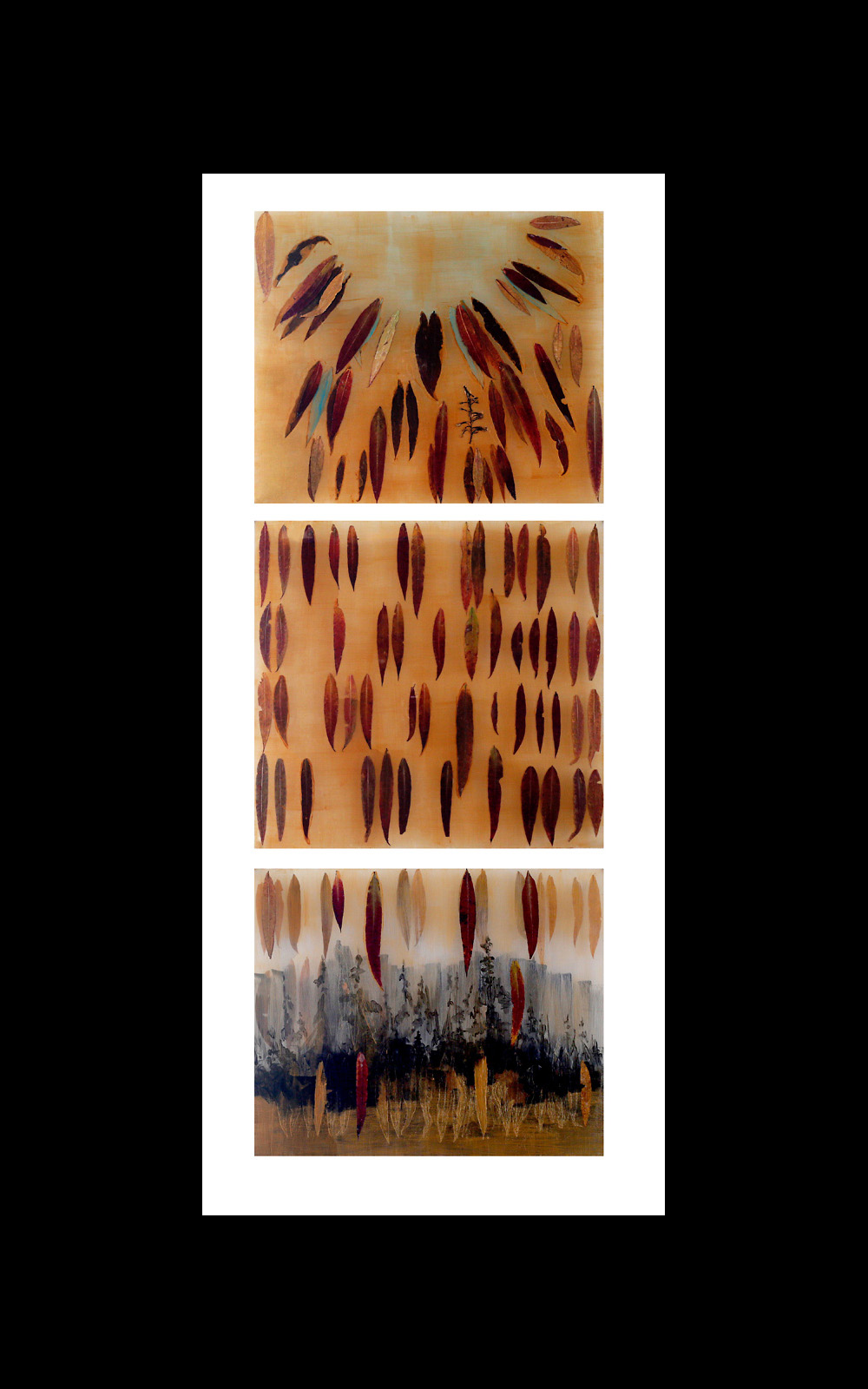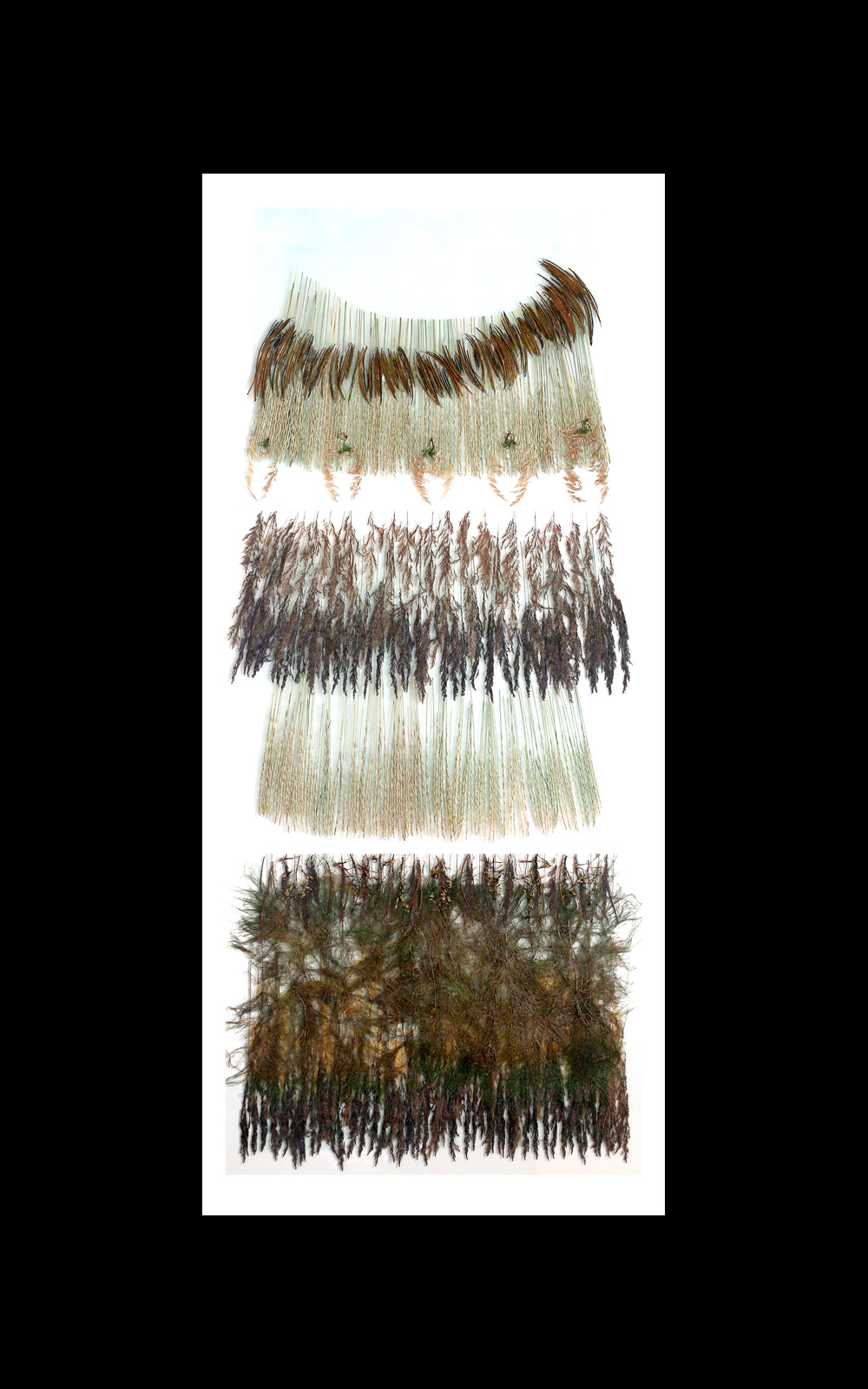beyond land’s end
Kachemak Bay State Park
[Alaska State Parks, Department of Natural resources, Artist-in-Residence, 2018]
View of Kachemak Bay State Park from Bishop’s Beach, Homer Alaska.
I am experiencing a major case of color intoxication. I peer into a tide pool as if it were a snow globe, and marvel at the combustion of colors. In my memory, I am gliding effortlessly on a magic tapestry of anemone, urchins, chiton, kelp, mollusks, with starfish splayed in hues of orange, purple and blue carpeting the floor of the lagoon beneath the canvas deck of the kayak. Watching droplets slice silently from the blade of the paddle animating the scene below, I am reminded of antique mirrors and horror houses. Only this is not horrible, it's delicious.
I promised myself I would be back. Only next time I would load the film in the SLR correctly, come armed with the right tools - art supplies, uninterrupted time, and the space for thoughts. And yet, that day, as I looked into my tide pool gazing ball, I could not have predicted a future without film, or that it would be three decades before I would return to China Poot Lagoon in Kachemak Bay, Alaska.
Sounding like some exotic location from a Pearl S. Buck novel, China Poot lagoon, quixotically named after Henry Poot - an early Homerite who employed Chinese immigrants to work in his herring factory, is neatly tucked into the coastline of Kachemak Bay, Alaska. As displaced as the words China Poot may sound in the Alaskan landscape, the lagoon itself is perfectly placed - beyond expectations, as is the entire Kachemak Bay State Park.
This past summer I was invited to return to the area as the Kachemak Bay State Park (KBSP) Artist-in-Residence (AIR). The agreement with the park was simple, I would spend a week alone at the ranger station in exchange for giving a public presentation and donating art. In my public presentation titled 'The Importance of Artist Residencies in Wilderness Spaces' I shared the mutual goal of these partnerships, to inspire future work which expands the reach of the park and to contribute to the creative growth of the artist.
I arrived at Homer Spit, a four and a half mile finger of land pointing directly across the water toward Kachemak Bay State Park, having driven my mobile art studio from Fairbanks through South Central Alaska and the Kenai Peninsula. I was to meet the park crew at the top of Ramp 4 at 8:30am for the boat ride across the bay to the ranger station. From past personal experience I know if you miss the tide you miss the ride, so I was standing at the top of the dock EXTRA early in my EXTRATUFs ® when the skiff pulled in. (No self-respecting Alaskan would ever approach water without wearing a pair of the iconic rubber boots. EXTRATUFs ® also work well for piles of bear scat and fish slime - more on that later).
The Kachemak Bay State Park Artist-in-Residency program is situated in one of the most spectacular locations in the world. Viewed from Land's End at the tip of that finger I mentioned earlier, the more than 400,000 acres contained in the park will steal your breath away. This is nature's majesty on a grand scale, a place where glaciers cleave snow-capped mountains and plunge into the ocean flanked by lush green forest, a terrestrial goddess slipping into a saline pool of emerald green. On a clear day it's hard to know where the sea ends and the sky begins, as disorienting as it is delightful. And the abundance of marine and land based wildlife is staggering.
There was no way for me to access China Poot by water so I decided to hike an unmaintained trail that climbs the ridge separating the ranger station from the two lagoons. While hiking the two-mile stretch, wearing my XTRATUFs ®, flanked by devil's club and crops of prehistoric looking sulphur-shelf (a psychedelic orange colored 'shroom that attaches itself to conifers) I counted thirty-three piles of bear scat (poop). Admittedly it was not all steaming, but the insipid tinkle of bear bells did little to reassure me and I felt compelled to augment the soundscape by reciting nursery rhymes and Spanish verb conjugations - using my loudest outdoor voice. I don't sing.
Sometimes small shifts portend an avalanche of change. Beneath the liquid surface of Kachemak Bay colors have shifted in the past three decades. During the residency I did not see a single starfish. A disease called starfish wasting has dulled the waters of China Poot Lagoon. Little is known about the cause of this disease which has slowly crept north via the West Coast. There have been other changes, fewer mollusks, and most noticeable, rafts of sea otter. At times these flotillas host as many as a hundred or more otter, a roiling island of flesh, smacking their lips and rocks against chest perched clam shells, slurping down the seafood cocktail innards. The exploding population of crustacean crunching connoisseurs, is challenging the ecological balance of the bay.
My experience commercial fishing and living in remote areas prepared me for managing the off-the-grid systems at the Ranger station. But you don't have to be a 'Wilderness Woman' or 'Mountain Man' to enjoy the park. With a little planning it's all accessible, with common-sense it's doable. There are public use cabins and water taxis to deliver you to trail heads leading to all kinds of options - want to see a lake, a glacier, a mountain, forest, sea-life, birds, large mammals, a jökulhlaup (probably not)? It's all there.
Sound travels long distances over water in undeveloped landscapes. One of the sweetest moments for me came one evening while observing a family kayak around the bay, baby strapped securely to her mom's chest, singing 'Only You' by the Platters. It was the one-year anniversary of their daughter's first trip to the park and they had returned to celebrate her first birthday!
What exactly is an Artist-in-Residency program? At first blush it might sound like an all expenses paid vacation for the artist (if only), or a good way to decorate the home office headquarters, but an Artist-in-Residency program is a privilege for both the artist and the sponsoring institution.
From the artist's point of view the purpose of such programs is to provide uninterrupted time and the resources needed to reflect, research, experiment or produce art, away from the distractions of normal life. Each residency offers its' own unique set of opportunities and challenges for both the artist and agency. There are as many kinds of AIR programs as there are artists. I have encountered programs where an artist could sleep for three months and the institution wouldn't blink an eye - trusting if the artist needed this to recharge their creative batteries, the residency had fulfilled its’ purpose! Other residencies will run an artist ragged with expectations and givebacks. Most often the artist and institution find a happy medium.
Parks throughout the nation have a long history of working with artists and Alaska has embraced this relationship. Today's savvy resource managers know they must reach audiences beyond the walls of the visitor center. Breaking convention, they look for new ways to communicate the value of their charge, using innovative methods to capture the attention of the nation with new media and interventions. That's where I come in.
I am a conceptual artist. Chances are, if you find yourself asking whether a particular piece of artwork is art? [or not] - it's more than likely conceptual art. The driving force behind my work is an idea and it is the idea that determines my choice of materials, and discipline. You might wonder why a park would want to form a partnership with an artist whose work is often temporary, seldom hung on a wall or sold in a gallery, who weaves plastic bags into a life size sarcophagus and strings fishing floats to form a fifty-foot rosary?
As an artist I have a unique platform for communicating ideas and the concerns of others. I can say a lot and never open my mouth. You can't fire, furlough or build a wall around me.
For several years, I have participated in wilderness artist residencies as a means of un-tethering from the studio, connecting with the physical world, and obtaining access to remote areas, and oddly enough meeting people. Wilderness residencies have become an integral part of my creative practice and an essential resource and source of inspiration for a personal project title, the ReWilding project.
https://www.sherylmareereily.com/#/rewilding-lab/
My primary concerns as an artist are human and environmental well-being. I believe the two are inseparable. Wilderness-based artist-in-residency opportunities mesh well with my interest in investigating humankind's complicated and often fraught relationship to wilderness. The ReWilding project is as much about our human inner landscape as it is about the outdoor environment, and the setting aside of public lands as parks and preserves, is an act that acknowledges both the intrinsic and extrinsic value of the landscape - it's a great partnership
henshaw creek Koyukuk
Henshaw Creek Science and Culture Camp
[US Fish and Wildlife Service, camp volunteer and Artist-in-Residence, 2016]
Saggeddlekkaakk'et is the Koyukan Athabascan place name for Henshaw Creek, which translates loosely to … place where the fish are.
In 2016 I was invited by the US Fish and Wildlife Service to participate in the Henshaw Creek Science and Culture Camp. The camp is located in a remote area of the Koyukan region and is a collaborative effort between - the US Fish and Wildlife Service Kanuti Wildlife Refuge, Tanana Chiefs Conference, Elders from the village of Allakaket, Student Conservation Association, campers and volunteers. The project seeks to enrich the lives of youth from the Interior of Alaska, preparing them as future leaders, through exposure to multiple ways of learning in a remote wilderness setting.
The Camp provides a path to understanding by sharing indigenous cultural values, knowledge, and technologies alongside modern technologies. These experiences fortify youth leaders with important knowledge and tools to survive 21st century impacts such as climate change - a new generation uniquely positioned between cultures, equipped for the future with the skills to actively contribute to finding solutions.
Medallions given to participants at the end of camp, honoring each child’s strengths. Birch wood rounds, Prismacolor, ink pen, found objects.
gates of the arctic national park and preserve
Brooks Range Alaska
[National Park Service, Artist in Residence, 2014]
The Caribou Abundance Blanket was inspired by the massive migration of caribou through the Oolah Valley, Gates of the Arctic National Park and Preserve. Beaded willow and berry edges reach out to antler tips embellished with plastic food wrappers. Silken thread anchors these ciphers to the petrochemical surface of a blue tarp. A delicate balance must be maintained when harvesting fragile ecosystems essential to our global survival.
Although I arrived too late in the season to witness the spectacle, evidence of the herd’s passage lay scattered about the tundra like debris on the morning after a wild party. The Valley was eerily quiet. In ten days I did not see a single mammal.
From this I learned that life follows the herd. Wolves, bear, mosquitoes, man - all sustained by this river of moving flesh. Ancient delicate laced trails, scat, old kills, discarded antler racks, reminders of the Porcupine caribou herd's passage - only the valley walls remaining to bear witness to this mighty flow.
kanuti National Wildlife Refuge
Yukon-Koyukuk Region Interior Alaska
[US Fish and Wildlife Service, Artist-in-Residence, 2014-2015]
Grasslands Mantle (2020 iteration), from the Mantle series, which investigates the earth's protective surface layer.
Alaska's vegetative layer significantly affects global climate health. works from the cloak-like mantle series containing indigenous grasses, equisetum, fireweed, mosses and other vegetate species reference the nutritional, medicinal and restorative benefits of wild plant species. Rising temperatures expand the range of invasive species. Escalating wild fire occurrences lay bare the earth, creating space ripe for new competition, and human development transports seeds to the region. These factors combined contribute to the colonization of the northern landscape with non-native plant species, destabilizing the pyramid of lifeforms the arctic tundra supports.
The Wilderness, as a locus of natural resources, turns vulnerable with the extraction of minerals. A proposed 220-mile road to a copper mine near Ambler is estimated to cost a billion dollars. The mine itself is projected to have a lifespan of 12 years. Both the mine and its road stand to dismantle the tundra’s fragile covering, to irrevocably shift the ecology and the lives of those who have lived in the region for generations.

